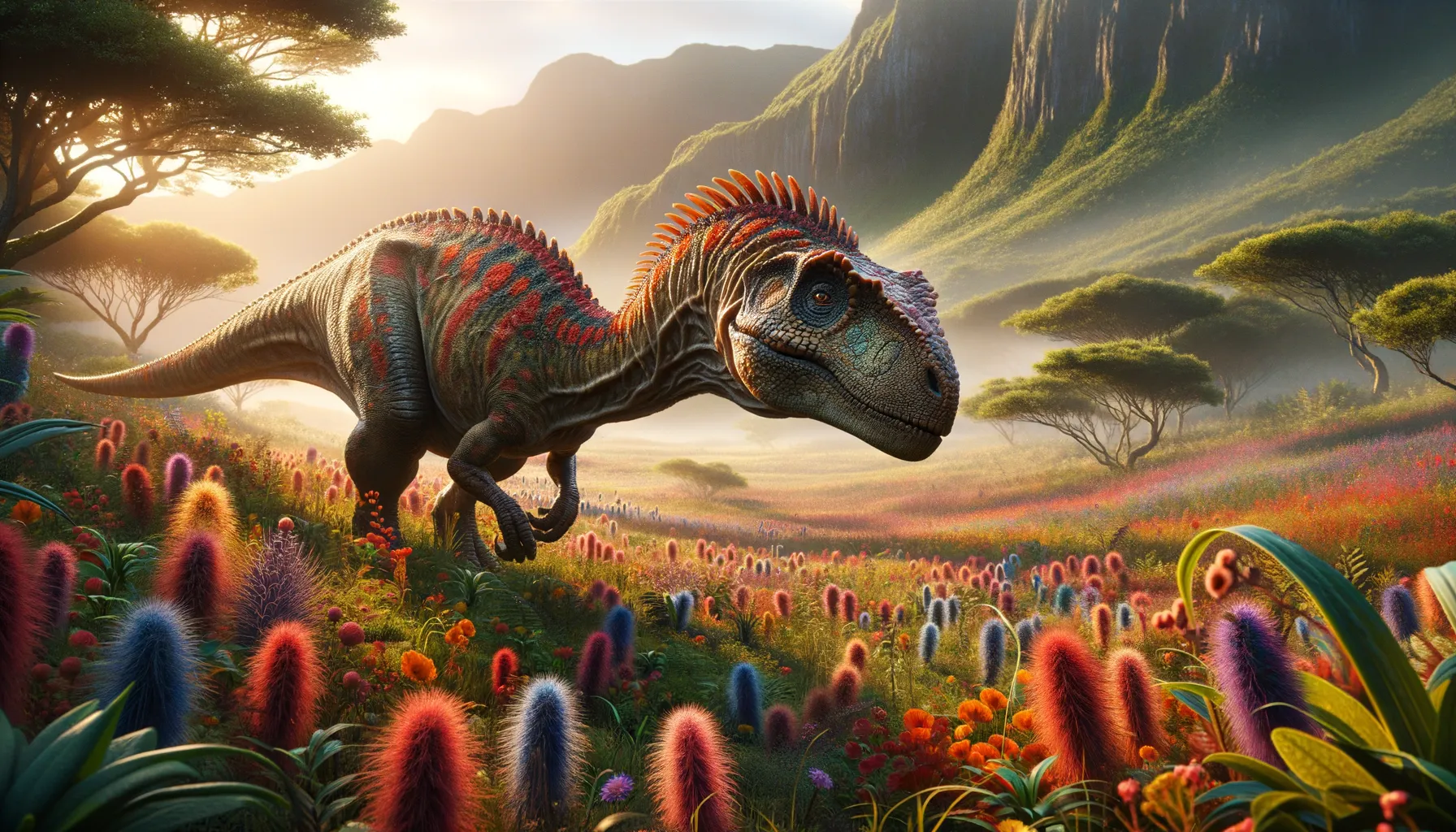
Tecovasaurus
An early walker of the dinosaur world.
Period
Triassic
Length
Measured up to 2 meters in length.
Height
Stood approximately 0.6 to 0.9 meters tall.
Weight
Estimated to weigh around 20 to 30 kilograms.
Tecovasaurus was a small herbivorous dinosaur that roamed the landscapes in the late Triassic period. Known for its bipedal posture, it likely fed on the diverse vegetation around it. With its presence rooted in parts of what is now North America, specifically Texas, this dinosaur has provided scientists with insights into early dinosaur evolutionary paths. Despite its modest size, Tecovasaurus plays a big role in understanding the rise of dinosaur dominance.
Diet
Tecovasaurus was herbivorous, primarily consuming plants. Its diet likely consisted of ferns, cycads, and other low-lying vegetation that was abundant during the Triassic period.
Hunting
As an herbivore, Tecovasaurus did not hunt for food. Instead, it foraged for plants, using its size to maneuver through dense underbrush.
Environmental challenges
Tecovasaurus faced changing environments as Earth transitioned towards the end of the Triassic period. These included fluctuations in climate and flora, requiring adaptability in its foraging methods. Additionally, the emergence of other more efficient herbivores and predators posed a constant challenge.
Speed
Moderate, likely moving at a leisurely pace.
Lifespan
Average lifespan of other similar dinosaurs.
First discovery
Identified from fossil remains found in Texas.
Fun Facts
- Tecovasaurus was a dinosaur that lived in what is now the southwestern United States during the Late Triassic period.
- Despite its name, Tecovasaurus is thought to have been more closely related to reptiles than to dinosaurs.
- Fossils of Tecovasaurus have been found in Texas, particularly in the Tecovas Formation, which is how it got its name.
- Tecovasaurus is known primarily from its teeth and a few jaw fragments, which means much about its appearance remains a mystery.
- It is believed that Tecovasaurus was an herbivore, feeding mostly on plants of its time.
- The name 'Tecovasaurus' combines 'Tecova', the location of its discovery, with the suffix '-saurus', meaning 'lizard'.
Growth and Development
Tecovasaurus likely experienced rapid growth during its early years, a common trait among dinosaurs. It reached adulthood relatively quickly, enabling it to reproduce and sustain its population. Over time, fossil studies suggest variability in growth rates, possibly influenced by environmental factors or competition.
Habitat
Living in what is now North America, Tecovasaurus inhabited semi-arid environments with seasonal variances. It was likely found near water sources like rivers and lakes, which supported rich vegetation. The landscape was dotted with small shrubs and cycads, ideal for a browsing herbivore.
Interaction with other species
Tecovasaurus coexisted with other early dinosaur species and reptiles. Interactions may have included competition for resources such as space and food. Given its herbivorous diet, its primary defense against predators would have been its speed and agility.
Natural lifespan
Tecovasaurus is believed to have lived up to 10 to 15 years naturally.
Reproduction
Tecovasaurus reproduced by laying eggs, as with most dinosaurs of its period. It likely built nests on the ground, where eggs were incubated by the surrounding environment. Parental care is not well-documented, but hatchlings had to quickly become self-sufficient.
Social behaviour
There is little evidence to suggest pack behavior in Tecovasaurus. It may have lived a solitary life or in loose groups for better foraging. Such behavior would have provided safety in numbers and more efficient use of resources.
Fossil locations
Fossils of Tecovasaurus have predominantly been found in the southwestern United States, particularly in Texas. These locations provide valuable sedimentary deposits that have preserved the remains. Continuous discoveries help refine the understanding of its distribution and ecological role.
